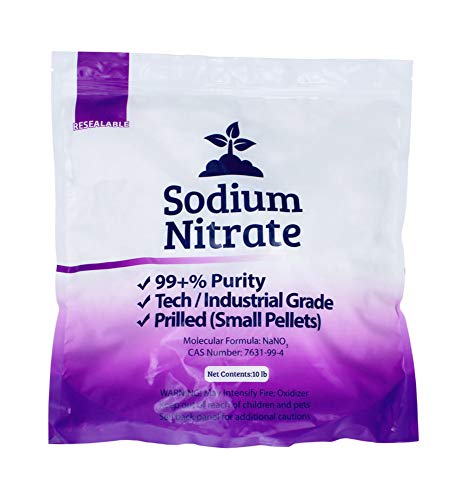I’ve seen small cupels for sale, but I have hundreds of ounces to process. I saw a method of making cupels using dry Portland cement and forming by compression into a bowl shape. Will that work? Or another diy or source for cheap cupels of larger size?Hi,
If you already melted the stuff and made flakes, i guess to avoid large quantities of metastannic and acid waste, I would recommend cupellation first and silver cell after. This way you will minimize the acid usage thus waste creation, and can get rid of the tin and lead as well.
Pete.
You are using an out of date browser. It may not display this or other websites correctly.
You should upgrade or use an alternative browser.
You should upgrade or use an alternative browser.
Best way to refine sterling?
- Thread starter thesillym
- Start date

Help Support Gold Refining Forum:
This site may earn a commission from merchant affiliate
links, including eBay, Amazon, and others.
The Portland cupels work.I’ve seen small cupels for sale, but I have hundreds of ounces to process. I saw a method of making cupels using dry Portland cement and forming by compression into a bowl shape. Will that work? Or another diy or source for cheap cupels of larger size?
But you still need a suitable furnace for them.
Last edited:
Martijn
Well-known member
Or the parkes process to get pm's out of the lead with zinc. Depending on the amount of lead.Hi,
If you already melted the stuff and made flakes, i guess to avoid large quantities of metastannic and acid waste, I would recommend cupellation first and silver cell after. This way you will minimize the acid usage thus waste creation, and can get rid of the tin and lead as well.
Pete.
you should have done a HCl leach on the silver to get rid of the tin/lead before melting
Then a GOOD washing to get rid of the vast majority of the HCl leach used to rid the tin/lead
Then incineration to rid the traces of chlorides
Then ether dissolve the sterling with nitric - cement with copper to up grade the 925 silver (sterling) to (plus/minus) 998 silver - then melt/pour anodes to run in the silver cell --- or - pour anodes as 925 (sterling) & run direct in cell --- when running 925 direct in the cell you ether have to make your electrolyte with MUCH more silver dissolved in it to prevent co-depositing of copper - or change out the electrolyte more often to prevent copper co-depositing
If I understand correctly - lets say you are taking apart sterling knife handles and weighted candle holders and other table top goods that have tin/lead metal as a filler-
Keeping this material separate - what's the preferred steps in getting rid of the tin/lead ?
1. Apply low heat so that the molten tin/lead runs off the sterling shells ( heat to only melt the filler material )
2. Boil the the sterling shells with the residual tine/lead on them in HCL ? ideal temp and how long on the heat?
3. Boil clean in Distilled water
4. Low heat applied to the washed shells to drive off the chlorides
Thanks
GOG
Last edited:
the top layer of silver is simply removed.
either by electrolysis in a solution of sodium sulfite.
or chemically in a solution of sulfuric acid and nitric acid.
proportion 95/5 respectively.
in addition, metastanic acid, B tin, when working with silver does not bring such inconveniences as when working with gold.
just more time for the chloride to settle, less filtration, more decantation.
to paraphrase the legendary Mark Twain :
The report of metastanic was an exaggeration.
either by electrolysis in a solution of sodium sulfite.
or chemically in a solution of sulfuric acid and nitric acid.
proportion 95/5 respectively.
in addition, metastanic acid, B tin, when working with silver does not bring such inconveniences as when working with gold.
just more time for the chloride to settle, less filtration, more decantation.
to paraphrase the legendary Mark Twain :
The report of metastanic was an exaggeration.
cejohnsonsr1
Well-known member
- Joined
- Sep 20, 2020
- Messages
- 284
Sreetips has a couple of videos from a couple of years ago showing how to prepare those kinds of Sterling items for recovery and refining.

$245.67 ($0.06 / Ounce)
50 lb Sodium Nitrate Fertilizer 99+% Pure Chile Saltpeter Gold Metal Refining Industrial Grade Glass Pottery Enamels
Duda Energy

$114.66
Used for Fuel/electrolytic Cells Acid ion Exchange Membrane, Proton Exchange Membrane,(Type 104,20 x 20 cm)
JiangXianYueXinXianShangMaoYouXianGongSi

$6.49 ($6.49 / Count)
$12.99 ($12.99 / Count)
ZOYER Thumb Brace, Thumb Spica Splint for Left and Right Hand, Breathable Wrist Brace with Thumb Support for Arthritis, De Quervain's Tendonitis, Carpal Tunnel, Pain Relief, Sprains
Global Roots Industries Inc

$37.23
$54.99
Chemical and Petroleum Industries at Newtown Creek: History and Technology (History of Chemistry)
Amazon.com

$12.99
BROADMAN CHURCH SUPPLIES Anointing Oil Holder with Key Ring and Eyedropper - Brass
Lifeway Christian Resources

$8.99
$9.55
Jewelry Pliers Set - Needle Nose, Round Nose and Wire Cutters for Jewelry Making, Repair and Crafts
Shynek Online

$25.99 ($3.71 / Count)
WORKPRO 7-Piece Jewelers Pliers Set, Jewelry Making Tools Kit with Easy Carrying Pouch (Blue)
GreatStar Tools

$159.99
5000ml Beaker, Low Form Griffin, Borosilicate 3.3 Glass, Double Scale, Graduated, Karter Scientific 247R8 (Case of 4)
Lake Charles Manufacturing

$86.58
$171.00
Catalysis in the Refining of Fischer-Tropsch Syncrude (Catalysis Series, Volume 4)
Basi6 International

$92.00
$115.00
Petroleum Refining: Technology, Economics, and Markets, Sixth Edition
Amazon.com

$4.99
$6.99
ROTATION Precision Hook and Pick Set for Automotive | 4-Piece Hand Tools
Rotation Direct
kurtak
Well-known member
the top layer of silver is simply removed.
either by electrolysis in a solution of sodium sulfite.
or chemically in a solution of sulfuric acid and nitric acid.
proportion 95/5 respectively.
These are processes used for dealing with silver "plated" items
This thread is not about silver plated items - rather it is about actual sterling (923) silver items
The items in question are items made with a thin layer/sheet of sterling overlaying a lead/tin "filler" - such as knife handles &/or candle sick holders
The question was how to get rid of the lead/tin residue that is still stuck to the thin sterling silver sheet after melting away the "majority" of the lead/tin "inside" the "overlaying" sterling item
Kurt





























































